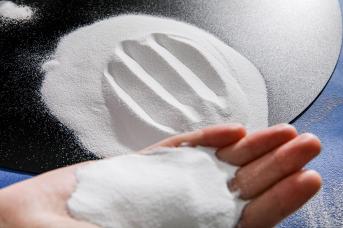In recent years, PE products have continued to move forward on the road of high-speed expansion. Although PE imports still account for a certain proportion, with the gradual increase of domestic production capacity, the localization rate of PE has shown a trend of increasing year by year. According to Jinlianchuang's statistics, as of 2023, the domestic PE production capacity has reached 30.91 million tons, with a production volume of around 27.3 million tons; It is expected that there will still be 3.45 million tons of production capacity put into operation in 2024, mostly concentrated in the second half of the year. It is expected that the PE production capacity will be 34.36 million tons and the output will be around 29 million tons in 2024.
From 2013 to 2024, polyethylene production enterprises are mainly divided into three stages. Among them, from 2013 to 2019, it is mainly the investment stage of coal to olefin enterprises, with an average annual production scale increase of about 950000 tons/year; The period from 2020 to 2023 is the centralized production stage of large-scale refining and chemical industry, during which the annual average production scale in China has increased significantly, reaching 2.68 million tons per year; It is expected that 3.45 million tons of production capacity will still be put into operation in 2024, with a growth rate of 11.16% compared to 2023.
The import of PE has shown a decreasing trend year by year. Since 2020, with the concentrated expansion of large-scale refining, international transportation capacity has been tight due to global public health events, and ocean freight rates have significantly increased. Under the influence of price drivers, the import volume of domestic polyethylene has significantly decreased since 2021. From 2022 to 2023, China's production capacity continues to expand, and the arbitrage window between domestic and foreign markets remains difficult to open. The international PE import volume has decreased compared to 2021, and it is expected that the domestic PE import volume will be 12.09 million tons in 2024. Based on cost and the global supply-demand flow pattern, the future or domestic PE import volume will continue to decrease.

In terms of exports, due to the concentrated production of large-scale refining and light hydrocarbon units in recent years, the production capacity and output have increased rapidly. New units have more production schedules, and sales pressure has increased after the units are put into operation. The intensification of domestic low price competition has led to profit damage under low price competition, and the long-term inverted price difference between internal and external markets has made it difficult for terminal consumers to digest such a scale of supply increment in a short period of time. After 2020, the export volume of PE to China has shown a trend of increasing year by year.
With the increasing pressure of domestic competition year by year, the trend of seeking export orientation for polyethylene cannot be changed. In terms of imports, the Middle East, the United States and other places still have a large number of low-cost resources, and continue to regard China as the largest export target market. With the surge in domestic production capacity, the external dependence of polyethylene will decrease to 34% in 2023. However, about 60% of high-end PE products still rely on imports. Although there is still an expectation of a decrease in external dependence with the investment of domestic production capacity, the demand gap for high-end products cannot be filled in the short term.
In terms of exports, with the gradual intensification of domestic competition and the transfer of some low-end domestic manufacturing industries to Southeast Asia, outward demand has also become a sales exploration direction for production enterprises and some traders in recent years. In the future, it will also give rise to export orientation, increasing exports to Southeast Asia, Africa, and South America. On the inland side, the continued implementation of the the Belt and Road and the opening of Sino Russian trade ports have created the possibility of increasing demand for polyethylene in the Northwest Central Asia and Northeast Russian Far East regions.
Post time: May-06-2024


